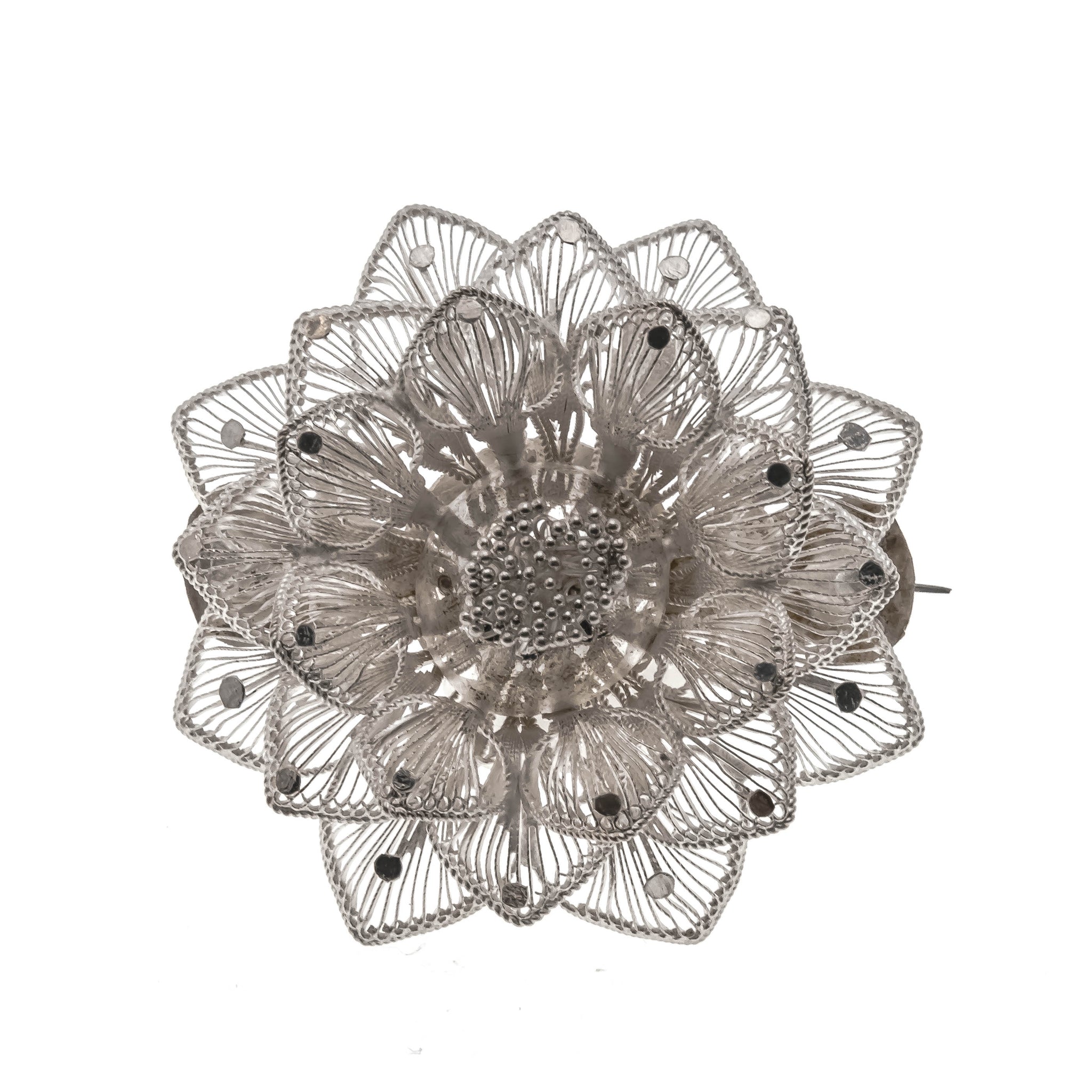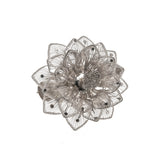Flower Delicacy - Art Deco 900 European Silver Floral Filigree Brooch (ADBR006)
Rarities Antique Jewelry
Flower Delicacy - Art Deco 900 European Silver Floral Filigree Brooch. This exquisite Brooch is crafted from 900 silver, tested. Featuring Art Deco styling , exquisite detailing, and quality silver-work. The beautiful brooch is in the form of a flower, each petal exhibits the most delicate filigree work. The pistil is also delicate and decorative. The back is solid and has its original pin and secure lock. The precious Art Deco era flower brooch is in wonderful condition, a perfect special addition to any fine jewelry collection.
Silver was first found in large amounts around 5000 BC, when prehistoric people dug the first copper mines. ... Large-scale silver mining had developed in Anatolia by 3000 BC. This was to meet the demand from the first ancient city states, which used the metal as a common medium of exchange.
The art of filigree is very ancient: it dates back to the dawn of Middle Eastern civilization. The first ancient objects with filigree decorations date back to 2500 BC.
The goldsmith technique later acquired great maturity first with the Minoan civilization, then in mainland Greece: with the first Greek colonies, the art of filigree arrived in the West.The testimony of the affirmation of the watermark in Italy dates back to the early Crusades.In the first half of the 1600s, filigree production increased.In the 1700s the filigree was used to embellish sacred furnishings, ornaments and as an ornament of popular costumes.From the 1800s until the first decades of 1900, the great expansion of filigree objects took place, which conquered every social class.
The most important centers of filigree become Genoa, Turin, Vercelli, Cortina d’Ampezzo, Scanno, Pesco Costanzo, Agrigento and Sardinia.
In 1882 were exported more than 450,000 kilos of silver filigree and 100,000 kilos of filigree gold from Italy to Europe and America.
In this particularly prosperous historical context, in 1884 an artisan from Campo Ligure, Antonio Oliveri, trained in the Genoese laboratory of the filigree Antonio Grasso, decided to open his own business in his hometown. One hypothesis of this decision t’s that happens due to a cholera epidemic that is raging in Genoa, but it is more credible that it is a choice linked to the lower cost of labor. Other artisans followed Antonio Oliveri example, defining the beginning of a tradition that will soon see the birth in Campo Ligure of about thirty workshops and will make the town an authentic capital (so much so that it is now defined the National Center of filigree jewelry production).
Even today in his workshop, the filigree with “bruscelle” (pliers of various sizes) and a torch to weld the silver threads creates rich embroideries that go to create precious objects.
This meticulous and patient workmanship is hidden in each of them makes them small works of art.
Measurements: Brooch 45.00 mm x 45.00 mm
Weight: 11.70 grams
Condition: Excellent
Origin: Europe
Date: Circa 1920

















